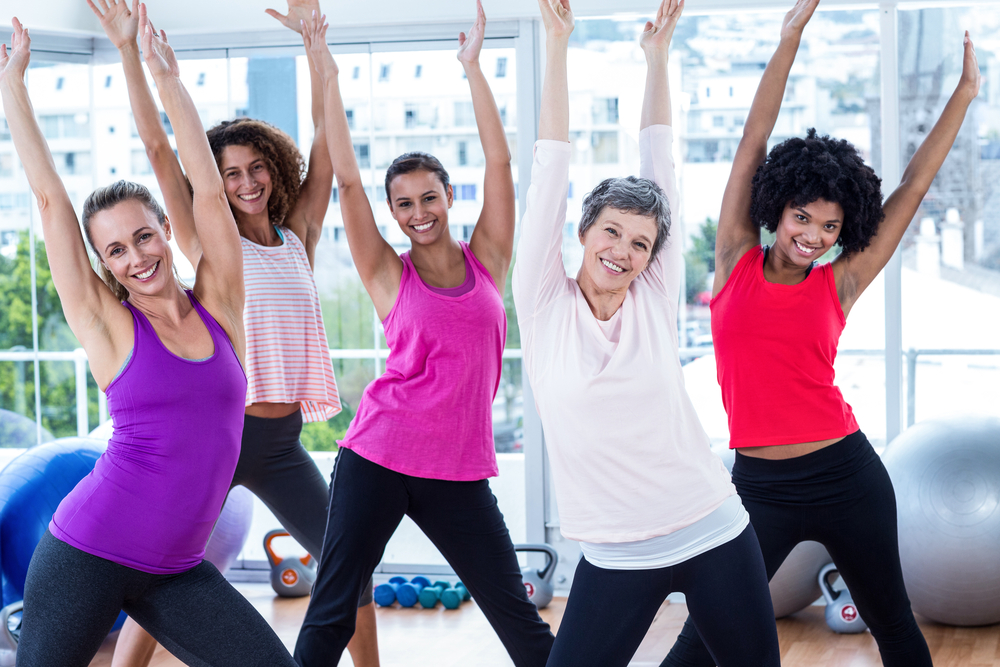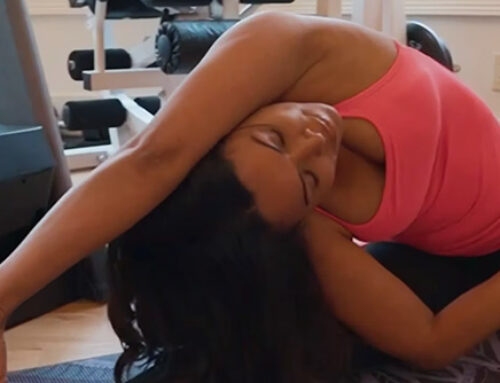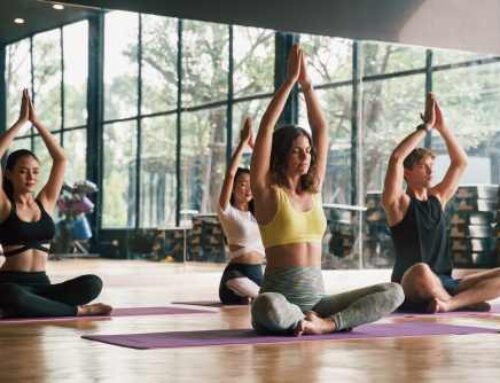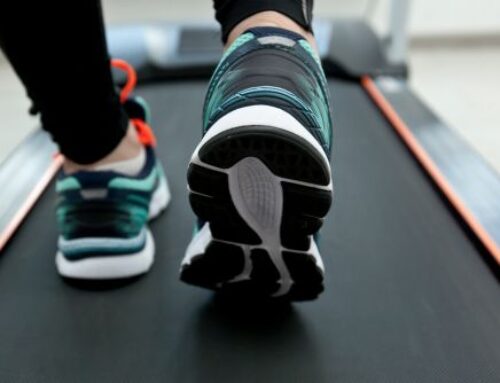There’s a load of confusion about when and how to best prepare yourself for a bout of exercise, when to do stretching, and what kind, and whether or not a cool-down period is even necessary. Getting these steps done right, and in the proper order, can help you optimize your fitness results and prevent injuries.
I used to think that warmups were unimportant and that I didn’t need them. Sadly, I had to learn the hard way. If you are going to do strength training, you are simply asking to get injured unless you warm up properly. The warmup is to primarily increase your circulation and blood flow to all your tissues. There are many ways to do this. Calisthenics, body squats and jumping jacks are examples. Do them for a few minutes until you’re breathing heavily and that should help.
You can then do some light stretching and mobility work, especially on the areas of your body that you plan on training, and then do your workout. Integrating a warmup into your strength training program is a wise strategy to prevent injury. According to two recent sports studies, many athletes waste time on ineffective warmup and cool-down techniques, and raise their risk for sports injuries to boot. As reported by The New York Times:1
“The [warmup] is meant to ready us for the physical exertions to follow, allowing us to perform better and, in theory, not hurt ourselves. The cool-down, on the other hand, is supposed to soothe tired muscles, easing some of the damage caused during training and preparing our bodies to return to exercise in the days ahead. But there has been little scientific or anecdotal consensus about the ideal ways to warm up or cool down.”
What Science Reveals About Popular Warmup Programs
To get to the bottom of it, sports researchers set out to systematically evaluate the effects of FIFA 11 and FIFA 11+, two of the most well-recognized warmup programs in the world of soccer.2 Six cluster-randomized controlled trials were included in the systematic review and analysis — two of them using FIFA 11 and four using the recently updated version of the program, FIFA 11+.
The original program, FIFA 11, is a quick and easy warmup involving jumping, shuffling and balancing exercises that takes about 10 minutes to complete. FIFA 11+ is a more extensive and intense warmup that includes sprints, vertical high-jumps, squats, leg lifts and rotations. In all, nearly 4,000 soccer players of both sexes, ranging in age from adolescents to middle-age, were included in the trials. Once results were combined and tallied, the superiority of FIFA 11+ became quite apparent.
Individuals using this more intense warmup routine sustained 40 percent fewer knee, ankle, hamstring, hip or groin injuries compared to those using other warmup techniques. Meanwhile, FIFA 11 had no substantial impact on injury rates. Lead author Kristian Thorborg, associate professor of sports and musculoskeletal physiotherapy, told The New York Times:
“The FIFA 11+ presumably reduces injuries by improving muscle strength, balance and coordination, while the older version and most other warm-up routines do not.”
While the studies in question looked at soccer players specifically, the results likely apply equally well to other sports that include sprinting and rapid changes in speed and direction, such as basketball and American football.
The FIFA 11+ Program
The FIFA 11+ program3 starts out slow, systematically progressing through three levels of difficulty or intensity. In all, there are 15 exercises as follows. For a demonstration of each exercise, see the video playlist above. You can also download a written manual from the FIFA 11+ website,4 and peruse other scientific papers relating to the program.
Level 1: Running
| 1. Running straight ahead | 2. Hip out |
| 3. Hip in | 4. Circuiting partner |
| 5. Jumping with shoulder contact | 6. Forward and backward sprints |
Level 2: Plyometrics, Strength and Balance
| 7.1. Bench: static | 7.2. Bench: alternate legs |
| 7.3. Bench: leg lift and hold | 8.1. Sideways bench: static |
| 8.2. Sideways bench: Raise and lower hip | 8.3. Sideways bench: leg lift |
| 9. Hamstring stretch (beginner/intermediate/advanced) | 10.1 Single-leg stance: Hold the ball |
| 10.2. Single-leg balance: Throw ball with partner | 10.3. Single-leg balance: Test your partner |
| 11.1. Squats with toe raise | 11.2. Squats with walking lunges |
| 11.3. One-legged squats | 12.1. Vertical jumps |
| 12.2. Lateral jumps | 12.3. Box jumps |
Level 3: Running
| 13. Across the pitch | 14. Bounding |
| 15. Plant and cut |
Ice Baths Fail to Demonstrate Benefit After Strength Training
A second study5 assessed the effects of cold water immersion after weight training. Ice baths are a common cool-down technique used by athletes to aid recovery and reduce inflammation post-exercise. However, according to this study, light activity — opposed to flash cooling — may actually be far more effective.
Here, healthy men completed a strenuous lower-body workout, using one leg only. Afterward, they immersed themselves into a tub filled with 50-degree F (10 degrees C) water for 10 minutes. The following day, they completed the same workout, followed by a 10-minute cool-down period of slow pedaling on a stationary bike.
During each test, blood and muscle tissue samples were taken before and directly after their cool-down. Testing was also repeated 24 and 48 hours afterward, to assess signs of inflammation and gene activity known to contribute to sore muscles. As reported in the featured article:6
“If the cold bath were working as athletes hoped, the scientists reasoned, there would be fewer markers of inflammation and potential soreness in their working muscles after the bath than after the gentle pedaling. But there were not.
The number of cells associated with inflammation was much higher in the men’s exercised legs compared to their unused legs after each workout. But those numbers were not significantly lower after the chilly bath than after the pedaling, either immediately or two days later …
The scientists did not ask the men how their legs felt or objectively measure whether they could return to strenuous exercise sooner after the ice baths. But the cellular evidence suggests that a cold bath may do little for heavily exercised muscles except chill them.”
Cryotherapy Does Have Benefits
While the study above failed to find a benefit from cryotherapy, or the exposure to cold temperatures, as a cool-down strategy post-exercise, there ARE benefits to this method.
In a previous interview, biological scientist Rhonda Patrick, Ph.D., explained how exposure to extreme temperatures, be it hot or cold, improves mitochondrial function, which is a foundational component of optimal health and fitness. Cryotherapy can help you burn more body fat, and mitochondrial biogenesis is directly involved in this process.
Additionally, regular exposure to cold will increase brown adipose tissue (BAT) that is mitochondrially dense and helps you burn fat far more efficiently. I personally use my pool in the winter for this and will swim in water temperatures as low as the mid-40s but typically in 50s or 60s for about 15 minutes. This also does a remarkable job of improving your cold tolerance. You do not need to do ice baths to achieve this benefit. Staying in water in the 50s to 60s is more than sufficient to get the benefits.
Besides that, when exposed to cold, your body increases production of norepinephrine in your brain, which can improve focus, attention and mood, and helps alleviate pain. You can increase norepinephrine two-fold just by getting into 40-degree F water for 20 seconds, or 57-degree water for a few minutes. While best known as a neurotransmitter, norepinephrine also acts as:
- A hormone that causes vasoconstriction, allowing your body to conserve heat
- A signaling molecule to make more mitochondria in your fat tissue (your main energy reserves)
Your body also creates cold shock protein in your brain in response to cold exposures. This protein is known as the RNA-binding motif 3 or RBM3, which regenerates synapses (the connections between neurons). Studies on human cells reveal RBM3 is activated by a temperature drop of as little as 1.5 degrees F, suggesting cryotherapy could have a neuroprotective effect.
Why Ice Baths Are Best Avoided After Strength Training
All of that said, there’s still good reason to avoid cold-water immersion immediately after strength exercises. The reason for this is because when you do strength training, you generate reactive oxygen species (ROS) that help increase your muscle mass. Exposing yourself to cold within the first hour after strength training will suppress that beneficial process. So, on days when you’re doing resistance training, you’ll want to avoid really cold showers or ice baths for at least one hour after your workout. As explained by Patrick:
“Exercise is a stress on the body. You’re making ROS. You’re generating inflammation. But that’s a good thing because it’s a short burst, and you want [that] … There’s a one hour timeframe from the time you stop exercising [in which inflammation peaks].
That is the stressful period. But then as soon as an hour hits, the stress response kicks in and you start to have a potent anti-inflammatory [response]. You start having an antioxidant response from activating all these good genes that stay activate for a long time.
… [B]ecause cold also causes an anti-inflammatory response, it’s important that you don’t get that anti-inflammatory response too soon, because you need some of that exercise-induced inflammation. You want that inflammation to happen to get the anti-inflammatory response.
That’s important for the strength training. The inflammation you generate during the strength training is part of the mechanism for making more proteins in the skeletal muscle. If you blunt that, then you’re going to blunt the effects of the strength training.”
- 1, 6 New York Times March 8, 2017
- 2 British Journal of Sports Medicine 2017 Jan 13. pii: bjsports-2016-097066
- 3 FIFA 11+ Program
- 4 FIFA 11+ Program Manual
- 5 Journal of Physiology 2017 Feb 1;595(3):695-711
https://fitness.mercola.com/sites/fitness/archive/2017/06/30/warmup-cool-down.aspx





Leave A Comment